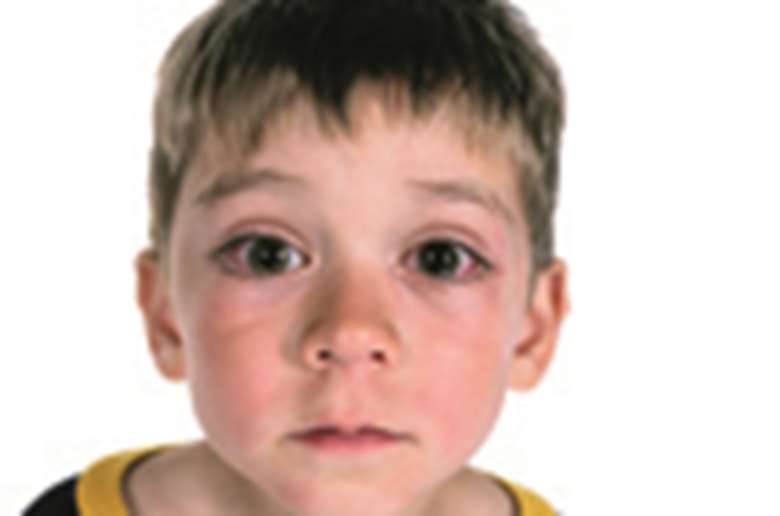A Unique Child: Health - A guide to ... conjunctivitis
Tuesday, June 23, 2009
Although it is usually not serious, this is a very contagious condition and childcarers need to take care to keep the uncomfortable infection from spreading, says Annette Rawstrone.

What is conjunctivitis?
Conjunctivitis is a very common eye condition that is usually not serious but can be very uncomfortable and irritating. It is the inflammation of the conjunctiva, a transparent mucous membrane that covers the white part of the eye and the inner surfaces of the eyelids. The condition usually affects both eyes, sometimes starting in one and spreading to the other.
Conjunctivitis can occur in very young babies and can be a sign of a more serious infection, but it may be confused with 'sticky eye' (congenital nasolacrimal duct obstruction) which is less serious and often clears without treatment. Advise parents to consult a doctor as soon as possible if you suspect a baby has conjunctivitis.
What are the symptoms?
There are different types of conjunctivitis, which can have slightly different symptoms. But commonly, it causes the eyes to look red and may also result in them feeling sore, itchy or burning. They may be swollen and produce a thin, watery discharge, or discharge sticky pus that can glue the eyelids together. There may be a slight sensitivity to light. In some cases, conjunctivitis can also cause visual difficulty, severe headaches or nausea or vomiting.
What causes it?
The three different types of conjunctivitis are known as irritant, allergic and infective. They are all caused by different factors:
Irritant conjunctivitis is triggered when an irritant substance, such as chlorine, grit or an eyelash gets caught in the eye. The irritant can cause the eyes to hurt and then rubbing can irritate them more.
Allergic conjunctivitis occurs when the eye is affected by an allergen, for example pollen or house dust, which reacts with the body's immune system. It usually causes intense itching of the eyes. This condition is common in people who have other allergic diseases such as hay fever, eczema or asthma.
Infective conjunctivitis can be caused by a virus, usually adenovirus which also causes the common cold, or bacteria, including Staphylococcus aureus and Streptococcus pneumoniae. This form of conjunctivitis is very common in children and elderly people and is responsible for 35 per cent of all eye-related problems recorded in GP surgeries. In newborn babies conjunctivitis is often the result of a bacterial infection, such as gonococcal or chlamydial infection, picked up in the birth canal during delivery.
How is conjunctivitis treated?
Conjunctivitis is diagnosed by a doctor, often by listening to the symptoms and examining the eyes. In severe cases, or if there is some doubt about the condition, the doctor may examine the eyes by using a special dye and a blue light to look at the surface of the eye.
Irritant conjunctivitis should clear by itself once the irritant is washed out or removed from the eye. The symptoms should then settle.
Allergic conjunctivitis is best treated by keeping away from the allergen - a difficulty if it is pollen. Prescriptions or over-the-counter medications, such as anti-inflammatory eye drops, can be used to alleviate the symptoms. Gently bathing the eyes with cooled boiled water may also help soothe them.
Infective conjunctivitis is contagious. Touching the eyes can spread the infection from one eye to the other or to another person. The doctor may prescribe antibiotic eyedrops or ointment but, for most people, the infection clears within a week without needing treatment.
Complications following on from conjunctivitis are extremely rare. Newborn babies, 28 days old or younger, are most at risk of developing complications from infective conjunctivitis. Conjunctivitis in a baby of this age is a notifiable disease in the UK. They should always be taken to see a doctor so that swabs can be taken and the appropriate treatment given.
If, despite treatment, the conjunctivitis symptoms worsen or vision deteriorates, then the person should return to the doctor.
How can it be avoided?
In the nursery setting, make sure that cloths and towels used on the infected eye do not come into contact with the other eye or with other children and staff. Disposable tissues are best used to dry the eyes and then thrown away after use, to limit contamination. Wash your hands carefully and make sure the child does not share pillows or towels with other children. Dispose of any leftover medication once the treatment is finished.




